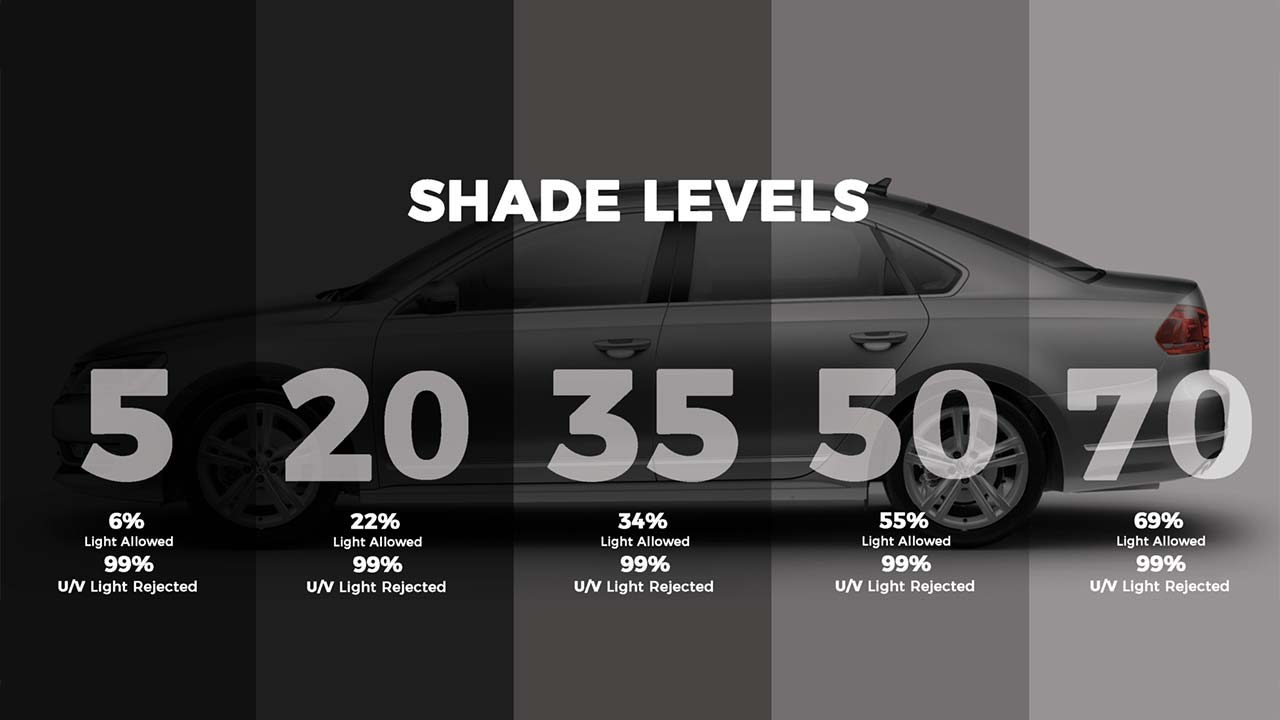Understanding The Levels Of Window Tint: A Comprehensive Guide

When it comes to enhancing the aesthetic appeal and functionality of your vehicle, understanding the levels of window tint is crucial. Window tinting not only provides privacy but also protects against harmful UV rays, reduces glare, and helps maintain a cooler interior. However, with various types and levels of tint available, making an informed decision can be overwhelming.
This article delves into the different levels of window tint, their benefits, legal considerations, and everything else you need to know before making a choice. Whether you are a car enthusiast or simply looking to upgrade your ride, understanding window tint levels will empower you to make the best decision for your needs.
From light to dark tints, we will explore how each level affects visibility, heat rejection, and privacy. By the end of this article, you will have a thorough understanding of window tinting, enabling you to choose the perfect option for your vehicle while ensuring compliance with local regulations.
Table of Contents
What Is Window Tint?
Window tint is a thin film applied to the glass of vehicles, homes, or commercial buildings to reduce the amount of visible light that passes through. This film is made from various materials, including polyester, and is available in different shades and levels of darkness.
Window tint is categorized by its visible light transmission (VLT) percentage, which indicates how much light can pass through the window. For example, a 5% VLT tint allows only 5% of the light to enter, while a 50% VLT tint allows 50% of the light to pass through.
Benefits of Window Tint
There are numerous advantages to tinting your vehicle's windows:
- Privacy and Security: Tinting provides a level of privacy for passengers and belongings.
- UV Protection: High-quality window films block up to 99% of harmful UV rays, protecting your skin and the interior of your vehicle.
- Heat Rejection: Tinted windows can significantly reduce heat accumulation inside the vehicle, enhancing comfort.
- Glare Reduction: Tint helps reduce glare from the sun, improving visibility and driving safety.
- Enhanced Appearance: Window tinting can improve the overall look of your vehicle, adding a sleek and stylish touch.
Levels of Window Tint
The levels of window tint vary based on the VLT percentage. Here’s a breakdown of common levels:
1. Light Tint (50% VLT and above)
Light tint allows a significant amount of light to pass through, making it a popular choice for those who want minimal change in visibility:
- Provides some UV protection
- Maintains a natural appearance
- Complies with most state regulations
2. Medium Tint (35% - 50% VLT)
Medium tint offers a balance between privacy and visibility, making it suitable for many drivers:
- Blocks a fair amount of UV rays
- Reduces glare while maintaining good visibility
- Commonly used in passenger vehicles
3. Dark Tint (20% - 35% VLT)
Dark tint provides significant privacy and heat rejection:
- Offers excellent glare reduction
- Highly effective in blocking UV rays
- May reduce visibility at night
4. Limo Tint (5% - 20% VLT)
Limo tint is the darkest option available, often used for professional vehicles:
- Provides maximum privacy
- Excellent heat and UV rejection
- Can severely limit visibility, especially at night
Legal Regulations on Window Tint
Before selecting a window tint level, it's essential to understand the legal regulations in your area. Most states have specific laws regarding the allowable VLT for different windows. Here are some general points to consider:
- Front Windshield: Usually requires a higher VLT (often above 70%).
- Front Side Windows: Typically restricted to a maximum of 35% VLT.
- Rear Side Windows and Back Windshield: Often have fewer restrictions.
Always check local laws to avoid fines or the need to remove your tint.
How to Choose the Right Window Tint
Selecting the right window tint involves considering several factors:
- Purpose: Determine whether you prioritize privacy, UV protection, or aesthetics.
- Local Regulations: Ensure compliance with state laws regarding VLT percentages.
- Quality: Invest in high-quality films that offer durability and effective UV protection.
Window Tint Installation Process
Proper installation is crucial for achieving the best results with your window tint:
- **Preparation:** Clean the windows thoroughly to remove any dirt or debris.
- **Measurement:** Measure and cut the tint film to fit each window.
- **Application:** Apply the film using a solution to prevent bubbles and ensure adhesion.
- **Finishing Touches:** Trim excess film and ensure a smooth finish.
Maintenance of Window Tint
Maintaining your window tint is essential for longevity:
- Avoid using abrasive cleaners that can damage the film.
- Use a soft cloth to clean the tinted windows.
- Allow the tint to cure properly before rolling down the windows.
Conclusion
Understanding the levels of window tint is essential for making an informed decision that suits your needs. From light to limo tint, each level offers unique benefits and considerations. Always remember to comply with local regulations to enjoy your tinted windows without hassle. If you found this article helpful, feel free to leave a comment or share it with others who may benefit from this information.
For more tips and insights on vehicle care, don’t forget to explore other articles on our site. We look forward to seeing you back here soon!
ncG1vNJzZmivmaC2b7XSrJirrZKWe6S7zGiqsKGWqbCivtNqaWiklauyrb%2BMqJ1mr5mjsbDDjK2gp6xencGuuA%3D%3D